Our 2025 Roses are Here!
Our 2025 Roses are Here!


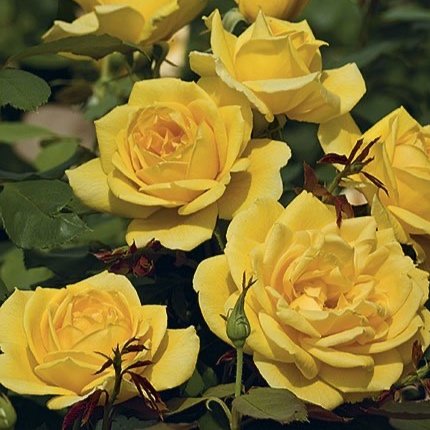
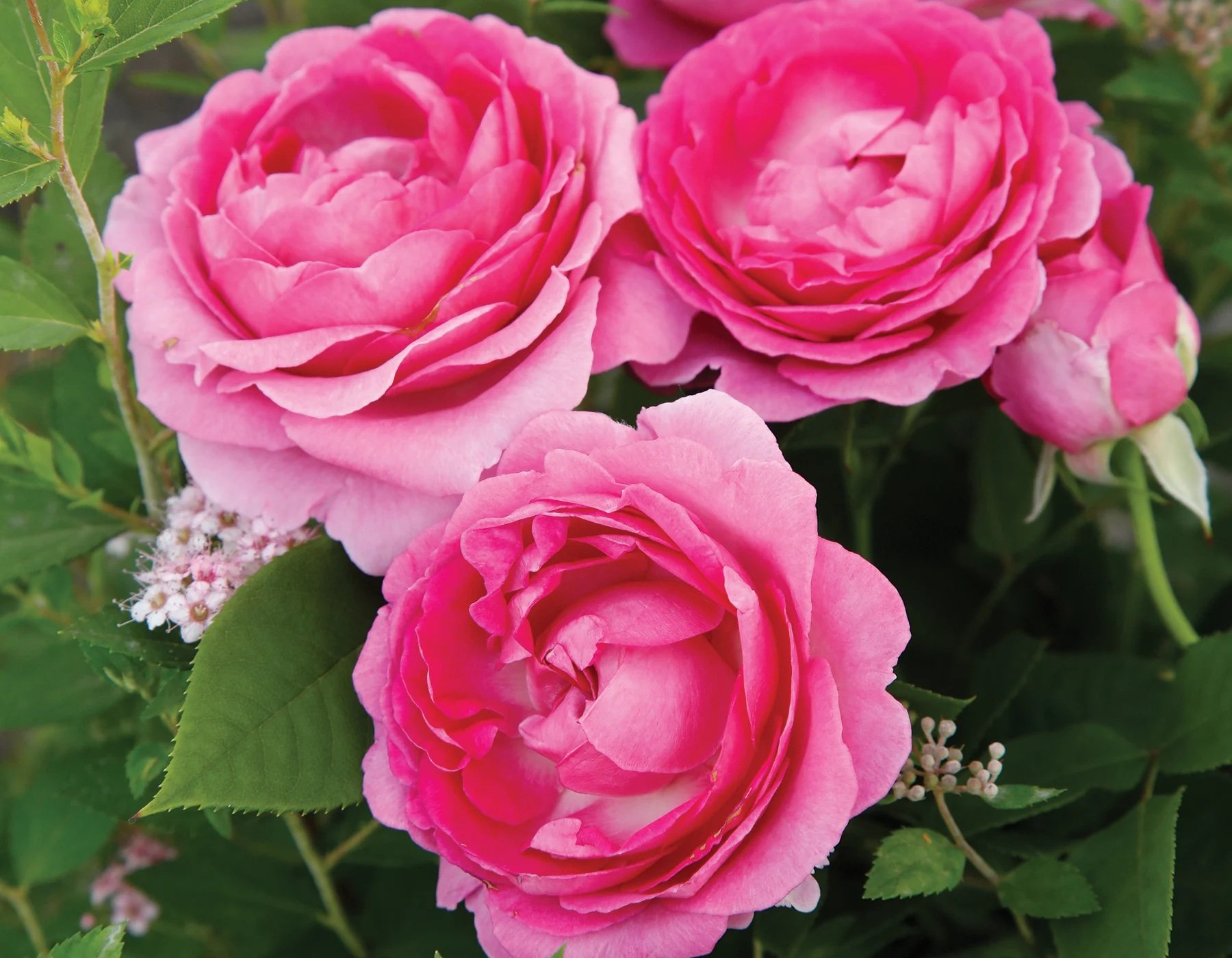
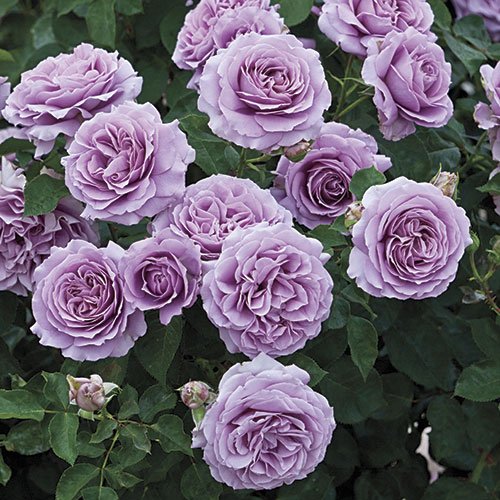

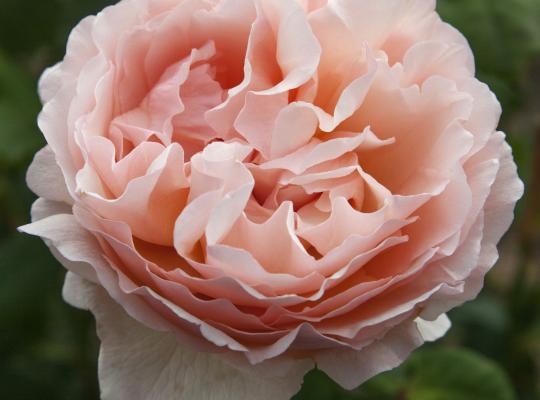


The Roses are Here, The Roses are Here
It’s that time of year we all anticipate - when the bare-root roses arrive.
What is a bare-root rose? Rose growers raise their roses using a variety of techniques which allow them to dig their rose plants and remove the soil from their roots when they are dormant. This may seem extreme and it is easy to assume that it would be detrimental to the plants, however when done right it is not. It does allow for easy economical transportation and reduces the possibility for spreading soil borne pathogens and pests.
We treat our roses a bit differently than most: we‘ve potted them up for the benefit of the roses and your convenience. We elect to pot them rather than leave them bare-root or “plant” them in temporary beds for a number of reasons including:

One of our bareroot roses potted and ready for sale.
It keeps the roots moist and protects them from drying out.
It provides you additional time to decide where to plant your selections.
It allows you to keep them until the weather and rain-soaked soil are more conducive to planting.
It allows the roots to begin to grow when there is a delay before planting.
It reduces the chance of disturbing fragile new roots when planting.
Culture: Plant roses in full sun (minimum of six hours a day) in well-drained, loamy soil, rich in organic matter with regular water. Roses will bloom in the Bay Area from spring through fall.
We have received our selections of both proven reliable performers and promising new 2025 introductions in the following categories:
Hybrid Teas: Solitary roses are borne on single stems; many are long-stemmed with tight buds and good-sized blooms that average 3 to 5 inches in diameter. They are the classic cut rose provided by florists. Plant sizes are quite variable from 2-3 ft. up to 6 ft. plus.
Floribundas: Cross between hybrid tea and polyantha roses. Stems typically produce a cluster of blooms each with hybrid tea type shape. Floribunda cultivars are available in a wide range of bloom colors with varying degrees of fragrance. Plants are generally small to medium sized staying in the 3 to 5 ft. range.
Grandifloras: Cross between hybrid tea and floribunda roses. Grandiflora roses typically possess the qualities of both parental types. Classic large, showy blooms that may be borne singularly or in clusters of 3 or more. Plants are generally large, vigorous and grow in a more upright habit than hybrid tea roses.
Climbing: Roses that possess strong vigorous growth habit that typically needs support and can easily be trained and attached to a fence, trellis, arbor, or other structure. Plants may grow 6 to 10 ft., but some can top 15 ft. in height. Climbing rose blooms are medium to large size and most are reliable repeat bloomers. A few grow and bloom in part shade, but most perform best with full sun.
Tree: Tree roses are not a class of rose but rather a form. These roses are grown in a manner as to form a lolly-pop shape or small tree. This form of rose has its buds grafted at the top of a straight trunk which allows for nearly any rose variety to be grown in this manner.
Check our website eastbaynursery.com Plant Lists/Rose Lists to see our 2024 selection.
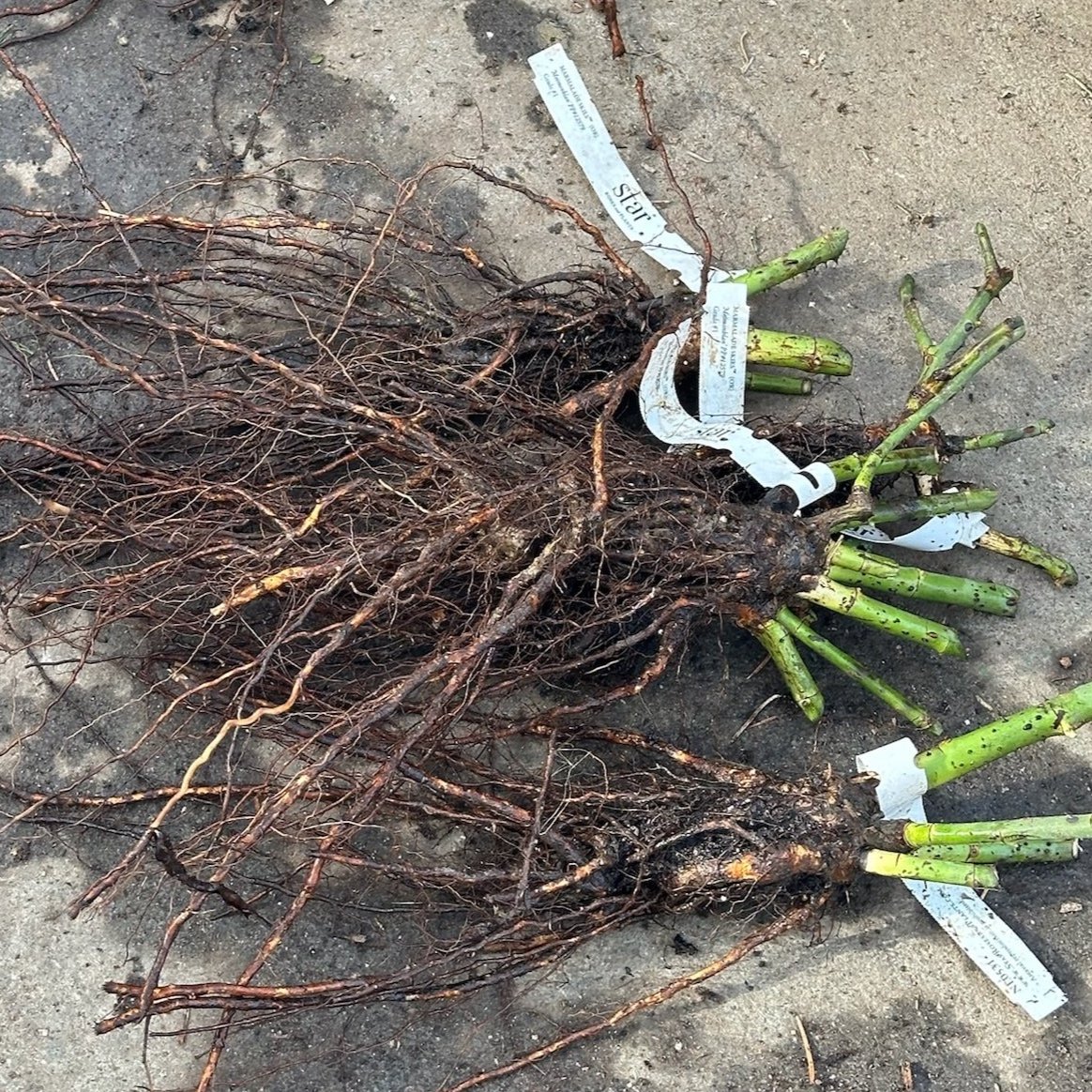
Bare rooted roses ready for potting
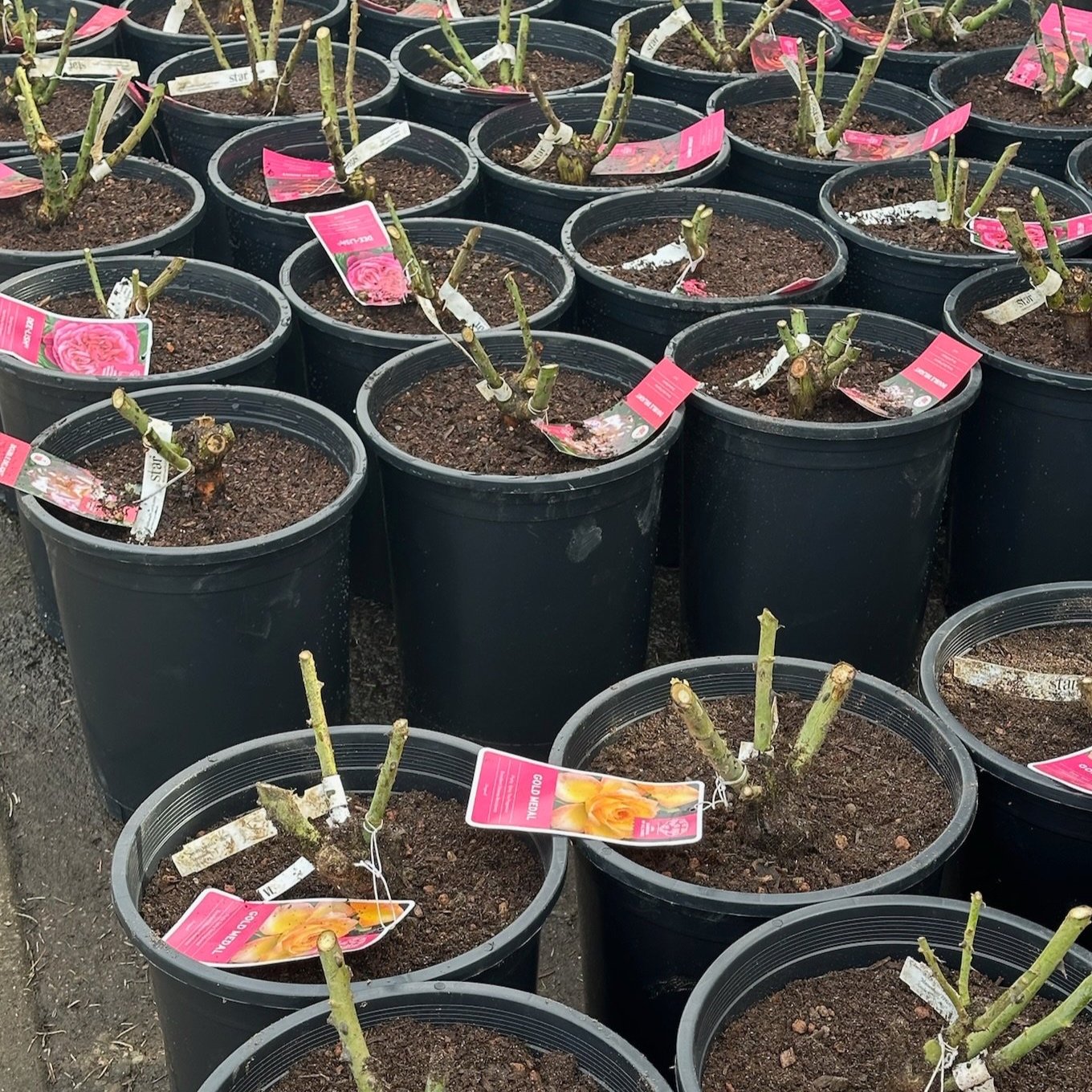
Our bare root roses after being potted
